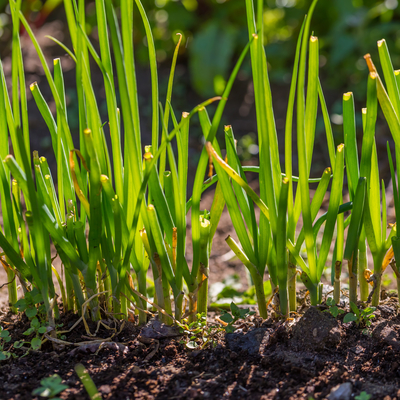Quick facts
- Chives thrive in full sun and well drained soil rich in organic matter.
- The easiest and most successful way of growing chives is planting rooted clumps in spring, after frost danger has passed.
- You can easily grow chives indoors in a bright, sunny location.
- Harvest chives by snipping leaves from the base of the plant.
- Chives are most flavorful when fresh.
The chive plant, Allium schoenoprasum, is a member of the onion family (Alliaceae). Lavender flowers, a clump-forming habit and cold hardiness make this plant an appealing garden perennial.
Its grass-like hollow leaves have a mild onion flavor and are common in salads and dips. The small puffs of flowers begin to bloom in late May or June. These are edible, and you can use them in salads and flower arrangements.
Soil pH and fertility
- Chives thrive in full sun and well-drained soil rich in organic matter.
- Have your soil tested.
- A pH range of 6.0-7.0 is best.
- They tolerate light shade, but six to eight hours of direct light is best.
- Over-fertilizing can be harmful to chives. Like many herbs, slower growth that is more compact leads to stronger flavors and healthier plants. A soil rich in organic matter should provide enough nutrients.
- If the plant begins to weaken from continuous harvesting each year, use a very light application of a 5-10-5 fertilizer once each spring.
- Use a liquid fertilizer at one-half the label-recommended strength every four to six weeks for chive plants grown outdoors in containers or indoors in a sunny window.
Growing outdoors
- The easiest and most successful way of growing chives is planting rooted clumps in spring after frost danger has passed.
- Divide established plants every three to four years. Spring is the best time for division.
- Space plants 6-12 inches apart.
- Replant new clumps in soil enriched with organic matter, such as fine compost.
- You can also start chives from seed.
Growing indoors
- You can easily grow chives indoors in a bright, sunny location.
- Pots must have holes in the bottom for drainage.
- Use a good houseplant potting mix that has light, well-drained soil.
- The plant will not grow much during the winter when light is poor. The plant may even die back a bit, but should rally with the return of brighter sun in spring.
- Do not fertilize during winter.
Watering
- When rain is infrequent, water deeply to make sure the soil does not dry out around the root zone.
- A light mulch of ground-up leaves, compost or grass clippings will help keep moisture.
Harvesting
- Harvest chives by snipping leaves from the base of the plant.
- Cut flower stalks off at the soil line once they finish blooming. This will prevent the plant from forming seed and keep it more productive.
- Chives are most flavorful when fresh.
- Keep extra chives by chopping up prewashed leaves into small pieces and freezing them in plastic containers. It is not necessary to thaw pieces out before using.
Garlic chives
Garlic chives, Allium tuberosum, are a variety of chives known for their garlic flavor. This variety has flat leaves and fragrant white flowers that bloom later in the season, usually July and August. You can use it like regular chives: as a fresh or dried culinary herb, as an ornamental in the garden or in containers, and in cut flower arrangements.
Reviewed in 2024


